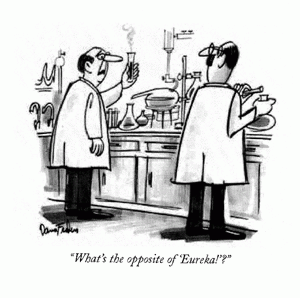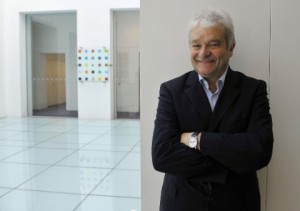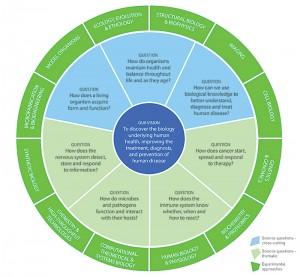I expected Pluto to feature as protagonist this week, but I let attention be hi-jacked by an alumni e-mail.
Grace of my college newsletter and Internet, I’ve heard the 2015 Girton Founders Memorial Lecture, Science as Revolution, delivered by the Royal Society’s current president. It fills in more dots in the picture of an earlier blog https://www.nightsoftheroad.com/?p=739 about the Royal Society and inherited effects of gender imbalance.
I’d not heard Sir Paul Nurse lecture before. He holds a Nobel Prize for discoveries in genetics. With such a name, perhaps he was always destined to specialize in medical research? A man at the cutting edge of scientific enquiry, he also revealed a preference – pleasing to lovers of history and a long view – to trace revolutions triggered by science over millennia rather than mere centuries. If interested, you can listen or read a transcript here: http://sms.cam.ac.uk/media/1925297
Sir Paul offered compelling reasons for considering progenitors of the 10,000-year-old agricultural revolution as true scientists, based on the way (he assumes) they proceeded: making observations triggered by curiosity, and thereafter carrying out increasingly reliable and reproducible experiments with different seeds, until wheat, barley and other grains became staple foods in many communities.
I enjoyed Sir Paul’s guided excursion through centuries of scientific discovery. I liked his mention of Karl Popper, who emphasized the value of trial and error in recognizing patterns and generating explanations. Trial and error is the story of my life. I’ve spent decades stumbling and scraping my knees on ‘faulty’ hypotheses, before finding a few that work (sometimes).
My research rarely satisfies Sir Paul’s scientific requirement for replicability. It is often the ideographic – the unique and one-off rather than the nomothetic – normative and replicable – that draws me. And my attention focused at first quite ideographically on Sir Paul. It was only when I became hooked by his comments on the Royal Society that a nomothetic perspective kicked in.
Given that he was lecturing at one of the first women’s residential colleges in Britain (founded in 1869 and turning co-ed only in 1976), it did not surprise me that Nurse acknowledged up front, “The weakness of the Royal Society, which was only corrected 300 years after its foundation, is that it did not include the participation of women, thus not profiting from half of the intellectual capital of humankind.”
He went on comfortably, “However, for its time the Society was inclusive and tolerant, and international in outlook. It provided a community which promoted discussion, critical commentaries, advice and criticism. It invented the scientific journal.” And, “Philosophical Transactions… incorporated the concept of criticism and reviewing from peers. The Society emphasised the importance of the public demonstration of experiments, the need to provide sufficient information for the work to be replicated elsewhere before it should be accepted. These sociological practices are crucial for the proper pursuit of science and remain important today.”
Great, but hold on. Let’s go back to his first statement. Has a society whose 2014 membership counts one woman among every twenty living fellows and foreign members really “corrected” its “weakness”? Just in terms of simple math, may we not expect ten times the proportion of women to wear an FRS label, before celebrating that correction?
Here is a typical gender distribution observable in organisations like today’s Royal Society:
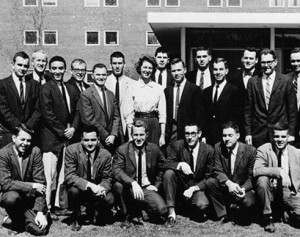 Perhaps we should allow the society some slack, given effects of historical drag? Male scientists, comfortably ensconced in chairs marked with ‘lifetime status’, might be expected to take their time in vacating the premises…
Perhaps we should allow the society some slack, given effects of historical drag? Male scientists, comfortably ensconced in chairs marked with ‘lifetime status’, might be expected to take their time in vacating the premises…
Very well. Let’s shift our focus more than three hundred and fifty years forward, then, and take a look at the new UK scientific body of which Sir Paul Nurse has just become CEO and Director. We may surely breathe a sigh of relief to see him take the helm of the Francis Crick Institute. Unlike his founding fathers at the Royal Society, Nurse knows that excluding women would prevent us from “profiting from half of the intellectual capital of humankind.”
The freshly-minted Francis Crick is “a biomedical discovery institute dedicated to understanding the scientific mechanisms of living things. Its work is helping to understand why disease develops and to find new ways to treat, diagnose and prevent illnesses”. http://www.crick.ac.uk/about-us/ The institute is an aspirational step forward in multi-disciplinary research.
It has a building in Camden in process of completion, intended to foster collaboration between scientists employed at its six founding institutions. They include three London-based universities, two medical charities and the UK government’s own Medical Research Council.
In 2016 this building will receive researchers in a phased move from the partners existing laboratories.
I appreciate so much of the declared collaborative and multi-disciplinary vision and strategy of the Crick Institute, including some early decisions and activities: active consultation with local community members on development of the building and site; ecological principles embedded in architecture and construction; a green space in the heart of St Pancras; a brief to engage the public in science education, and creation of a Living Centre that engages local community.
The Crick Institute’s seven high level questions that will guide its research program are clearly spelled out and shared along with identified research groups and topics:
The Crick also declares five strategic priorities:
- Pursue discovery without boundaries
- Create future science leaders
- Collaborate creatively to advance UK science and innovation
- Accelerate translation for health and wealth
- Engage and inspire the public
As one who perceives developing an understanding of genetics as essential to humanity’s evolution, and also sees creation of Crick as a potential landmark on that journey, I’d so like to feel unreservedly inspired and engaged by what I read. Yet I noticed a skepticism growing in me as I dug deeper into the website. I console myself that skepticism is considered vital in scientific inquiry, since at least the time of our old Nights of the Road friend, Francis Bacon.
For brevity, let’s just follow the earlier thread on gender.
By comparison with Royal Society membership in the 1660s, the 2015 Crick board can claim diversity: its 11 members include four women, as well as a German, a Sikh whose parents arrived in the UK as refugees from Pakistan, and a man whose previously headed a clinical research unit in Vietnam. Still less than parity, but three of the four women are scientists, and the fourth is actively engaged with many institutions that have relevance for Crick. All these women have demanding commitments elsewhere, as well as offering direction to the new institution. Which surely makes composition of Crick’s own executive vital to its balanced development and focus?
The executive management team comprises 17 members. There are also three associate directors who may be considered part of executive leadership, since, “They will each have particular responsibilities and will become members of the Crick’s Science Strategy and Policy Committee.”
Uh-oh! Of 17 people on the EMT, 14 are men. Moreover, all three of its women occupy support roles: accounting, finance and IT. All five research directors on the EMT are men. Two of the three associate research directors are men. So, in terms of overall executive gender balance, the Crick has achieved less than one woman to every four men. And its scientific research directorship of one woman in eight resembles the make-up of a G8 summit:
In his memorial lecture, Sir Paul Nurse spelled out the value of collaboration and consensus. He said of the Royal Society’s accomplishments that: “the pursuit of the scientific endeavour embraced the communication of advances widely and publically, and the encouragement of debate. What emerged from this was the importance of consensus opinion amongst the scientific community. If an idea or a set of experiments and observations are found to be convincing by the majority of scientists familiar with the area, then they gain extra weight by having passed the test of scrutiny, often intense scrutiny from many experts.”
Sir Paul went on “This is why the consensus opinion of scientific experts in an area is important, as it gives the most reliable overview available at that time of that area. It is not that consensus is a lazy agreement, quite the opposite in fact, the consensus will have been arrived at because it has stood the attacks and commentaries of other experts, who need to be convinced before they give their agreement and support for that view. That is how scientific consensus works today, so if an idea or hypothesis has value, it will generally spread rapidly through the scientific community and become the consensus view. And if it has limited or no value it will not do so.”
Collaboration and consensus opinion will be essential for the Crick to realize its vision. Whole-hearted collaboration is still a rare compost in science, so we wish the Crick well.
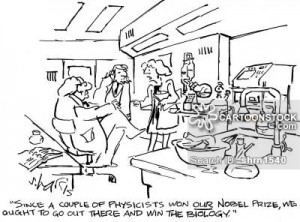
But, even if it is not through ‘lazy agreement’, what type and quality of collaboration and consensus is achieved if the body invited to define and build omits key elements of the population and perspectives? Nurse assumes that the scientific community he described is made up of experts collectively capable of seeing the whole picture. Does not that depend on the diversity of the eyes doing the looking?
Sir Paul concluded by asking, “What can we learn from the past that will help in the future to ensure that revolutions in scientific knowledge and understanding continue, resulting in revolutionary improvements in the human condition?”
He and the Crick might already have started by noticing how long it has been taking the Royal Society to move beyond structural gender imbalance, and then taking care not to repeat the acknowledged weakness. Instead, its 2015 appointments have created a female executive leadership representation of just 17.6%. How many centuries will it take Crick to get to parity?
The inheritance of the Royal Society appears to be still casting a mighty strong shadow, if the only women scientist on Crick’s new executive management team is a former research chemist whose remit is IT, in which she has worked for 25 years, and the one single woman scientist as associate research director on a Strategy and Policy Committee is expected to represent “half of the intellectual capital of humankind”.
Anne O’Garra you have a big job on hand, although presumably your muscles are in trim, since you made it to the distinction of FRS after having had to attend a boys only school for science and thereafter struggle even to acquire your first university degree. Bravo for that. http://dmm.biologists.org/content/6/1/6.short
Based on observable data – essential starting point for the scientific method – my current hypothesis is that, instead of taking a truly revolutionary recruitment opportunity, Sir Paul Nurse and the Crick have followed history and, unless noticed and challenged, may yet continue to reinforce an acknowledged weakness inherited from more three and a half centuries of Royal Society imbalance. I might have modified it if I could have found the word ‘gender’ featuring anywhere in the description of strategic priority 2: Create future science leaders…
I will be delighted to have my hypothesis proved wrong,
In the revolution made possible by Francis Crick and his colleagues with the discovery and study of two-strand DNA, much apparently extraneous matter became labeled junk. It was ignored until years later, like the single woman on Crick’s team, who received no public acknowledgment of her role in the discovery. I wonder when we will see modern scientific leadership move to take gender seriously? Perhaps around the same time that we will see Crick’s pursuit of ‘discovery beyond boundaries’ open the institute up to the concept of 12-strand DNA? Now that really will be revolutionary.
Pauley Perette/Abby Sciutto: you still have work to do.
Sorry Pluto: next time.



